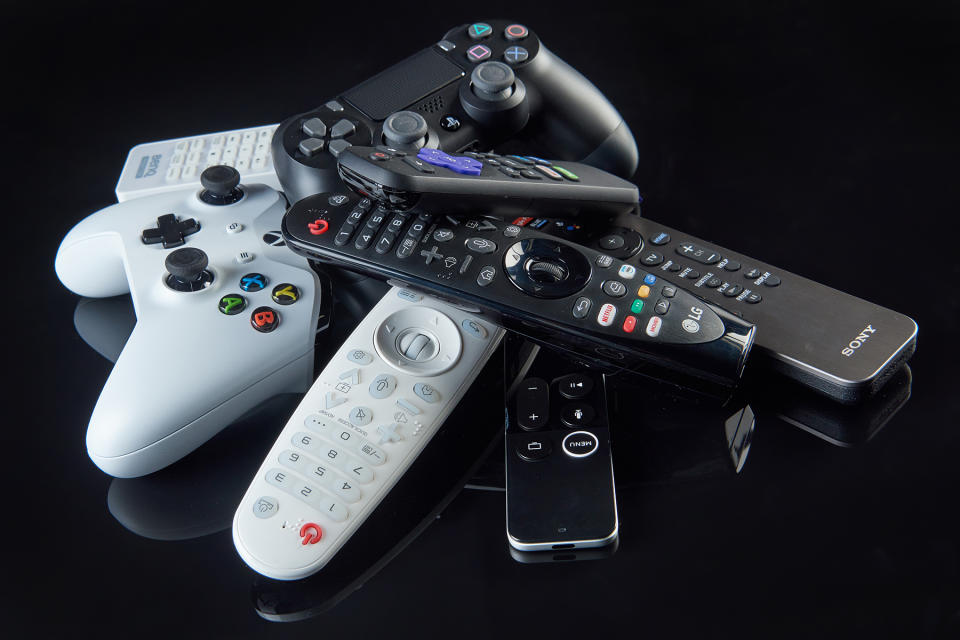How to pick a 4K TV in 2019
Everything you need to know to make an informed decision.
Making your way through the sea of flat-panel TVs that fill big box stores and online shopping carts in 2019 is tougher than ever before. Even though many of today's televisions have a baseline picture quality that was nearly unreachable just a few years ago, trying to find one that fits you among identical-looking screens with differences that are only apparent in their price tags will require some skill.
The good news? After a few years on the market, availability of the latest technology buzzwords has largely stabilized, so you don't have to spend a lot to get a great looking television.
Size
Other than price, size is the big (or small) question you need to consider the most. Assuming you have the room, going as large as you can afford is more of an option than you might think. Ultra HD televisions have such high resolution that even if you're sitting up close, it's impossible to see each pixel, and with modern upscaling technology even older HD content should look good on your big screen. For most people, something between 50 and 60 inches will be best, but going from a 55-inch TV to a 65-inch one adds almost 40 percent more screen area -- that's a lot of extra Keanu.
4K, HDR and 8K
One of the easiest questions to get out of the way is choosing a resolution. 4K TVs pack in over eight million pixels on the screen, compared to two million for 1080p. The technology is so cheap to produce at this point that any large TV you're considering will be 4K, and with Ultra HD video streams available from sources like Netflix, Amazon and Disney you'll be able to appreciate it more and more. You might be tempted to future proof with 8K, but getting the most out of 33 million pixels will require a screen size, bandwidth and budget that's beyond the reach of almost everyone.
Things get a little more complicated when it comes to the other big acronym: HDR. It stands for high dynamic range, and it can do more to make movies, TV shows and games look amazing on your TV than 4K resolution alone. They support more colors to make images pop off of your screen, and can have greater contrast between the darkest and brightest parts of an image.
One tricky element is that, while there's a standard version of HDR called HDR10, Samsung and Panasonic support a format called HDR10+ while most other manufacturers (LG, Vizio, Sony, TCL, Hisense) include Dolby Vision HDR. HDR10+ and Dolby Vision aren't exactly the same, but both of them allow for even more precision when it comes to setting a TV's contrast levels for each particular scene. Amazon and Netflix have content that supports both advanced settings, which is a stance that is becoming more common. Disney+ and Apple's TV+ have only confirmed support for Dolby Vision, which is something to keep in mind if you're trying to see all the Marvel and Star Wars hits in their best possible quality.
LED vs. OLED, fight
While resolution and contrast have changed a bit over the last few years, the technology that's in these screens hasn't. For smaller or cheaper TVs at mid-range prices and below, LCD (or LED) is what's available. That uses bright lights mounted around or behind the panel to create the picture that you see. Most of the better screens available use LEDs behind the screen, or local dimming, instead of edge lighting. By increasing the number of lights (or dimming zones) the contrast and control of where the light is gets better -- but the price gets higher too. Companies like TCL and Vizio offer strong mid-range options that will look great without breaking your budget.
For a bit more money, OLED becomes an option. Unlike LEDs, the light source is built into each pixel, allowing for far more precise control at the cost of some overall brightness. For years, this has been the premium technology to have and that hasn't changed in 2019. What is different, however, is that LG isn't the only OLED TV maker to choose from. Sony and Panasonic both offer TVs with the technology, and as judged by experts in recent blind tests, they may have the best overall viewing experience. That is, if you're willing to spend a few thousand dollars.
The Rest
Another wrinkle to consider is if you feel the need to dominate at quick-twitch video games. Third-party sites like RTINGS and DisplayLag make it a point to test out each new TV to find out how they measure up, and are a good resource to check if you need to make every millisecond count. While HDMI 2.1 could help minimize lag with refresh rates that sync up perfectly with your console or PC, most current TVs max out at HDMI 2.0, and so do all of the currently available gaming systems, though the Xbox One X supports some of the new 2.1 features.
Speaking of HDMI, it sounds dumb, but you need to seriously consider what you want to plug into your TV. Some low- and mid-range sets, especially smaller ones, only have two or three HDMI inputs. These can fill up very quickly, and going for a set that has more inputs will give you extra flexibility in the future.
Almost every TV is "smart" nowadays, but even major TV brands can sometimes get left out of the initial rollout for a new service. TVs that have Roku's smart TV apps built-in are a good bet to keep pace with new technology, while support for Google's Cast or Apple AirPlay 2 makes your phone the star when it comes to streaming and control. Being able to sync up with AI-connected smart home controls or multi-room audio is another bonus that you won't want to miss.

TOP PICKS
TVs are a big purchase, but while we would recommend you check out a TV for yourself before buying it, we have a few suggestions to get you started. To make price comparisons easier, our picks are all going to be at 65 inches, but there are equivalent 55-inch models available for less.
Hisense 65H9F
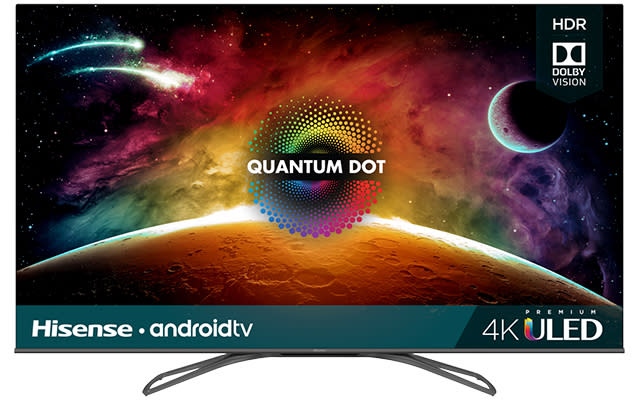
Whether or not you recognize the brand name, this year Hisense has a TV worth paying attention to. The 65H9F is truly impressive, with local dimming LED backlighting that matches up to the competition from Vizio and TCL, plus the inclusion of quantum dot tech that keeps its colors up to par. It has Dolby Vision HDR support and upscales lower-resolution content well.
At about $900 it's right in the middle of the pack price-wise, but the compromises are few. Despite an interesting-looking stand, it should fit perfectly in your living room, as it's ready to accept voice controls from Google Home and Amazon Alexa.
It has a weaker speaker setup than some of the others, and it's not great at off-angle viewing. But if you bring your own soundbar and sit in front of the TV when you're watching it then I think it will work just fine.
Hisense 65H9F on Best Buy - $900
Samsung UN65RU8000
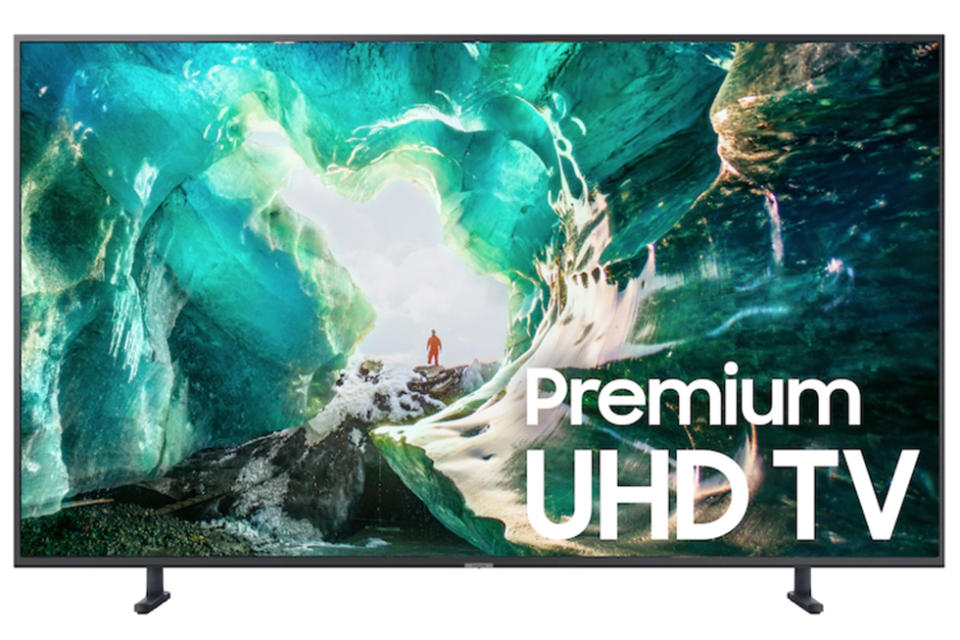
A standard-bearer in midrange 4K TVs is this 8000 series set from Samsung. As you'd expect from a big-name manufacturer, it brings all of the standard features, although Samsung swaps out Dolby Vision HDR for its preferred HDR10+ technology. It's fairly similar in experience and becoming easier to find with support from Netflix, Amazon and some Ultra HD Blu-ray releases.
What Samsung brings to the table is its own app platform that is the only one where you'll find Apple TV's full video app integrated directly into the TV. It also has a low input lag which will please gamers, plus support for variable refresh rate and auto low latency mode -- features that are hard to find in this price range. On the other hand, instead of voice assistants like Alexa or Assistant, you'll be living with Samsung's Bixby AI instead.
I don't have any issues with this TV compared to the others mentioned, I'd just like it a little better if it were cheaper. You can find it pretty easily for about $1,000 right now, and if you see it on sale for less then it makes for a much more compelling option.
Samsung UN65RU8000 on Amazon - $998
LG 65SM8600
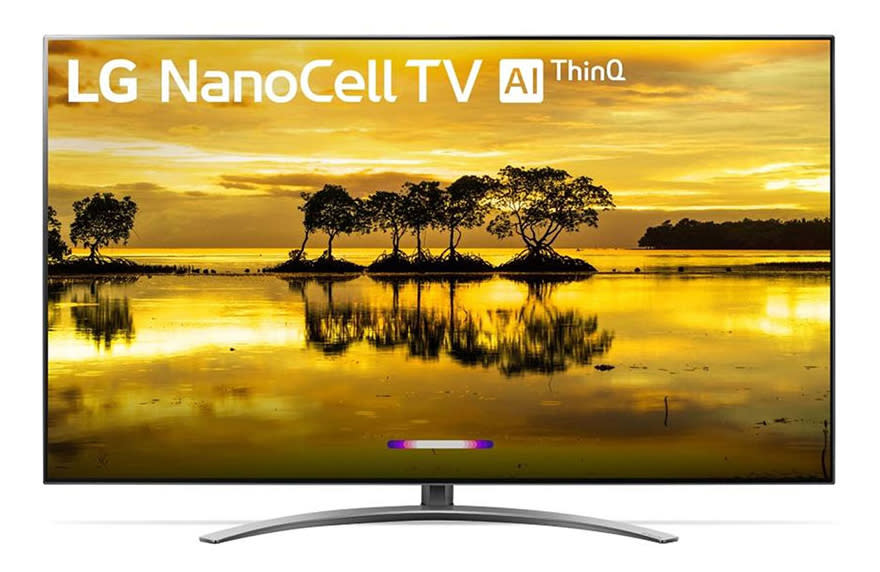
Like Samsung, this one has a bigger name and costs more, while offering similar middle-of-the-pack performance. The picture quality, even with HDR and support for Dolby Vision, is just alright, although reviews indicate it can deal well with a brighter room and off-angle seating positions.
It also costs just under $1,100, so despite LG's webOS smart TV platform, AirPlay and other features, this one won't get our highest recommendation. Its sibling the LG SM9000 adds full-array LED backlighting and better picture quality, but it also costs even more, at $1,300 for a 65-inch.
LG 65SM8600 on Amazon - $1,097
Vizio P659-G1
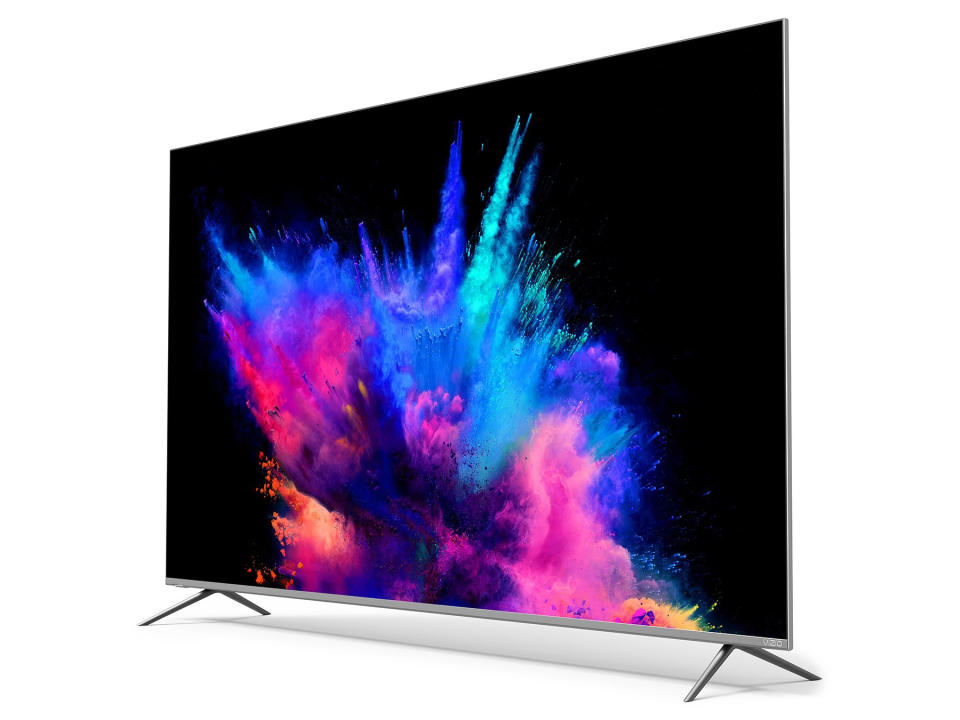
This year Vizio mixed up its premium 4K TV lines with the addition of a new "X" model, but the standard P-Series is still a very good option. At $1,099, it strikes a good balance of just-above-midrange features without stretching your budget.
5 HDMI inputs, including one low-latency slot built for gaming bring the value that people have come to expect from Vizio. Of course, if you don't want to plug anything in then its interface is built for use with Google Cast, plus it was one of the first TVs out of the gate with AirPlay.
Quantum dots improve its color performance and make sure that whatever you'd like to do with this TV -- gaming, watching movies or streaming something free -- it will look like you spent a lot more money than you actually did.
Vizio P659-G1 on Amazon - $1,098
LG 65C9P
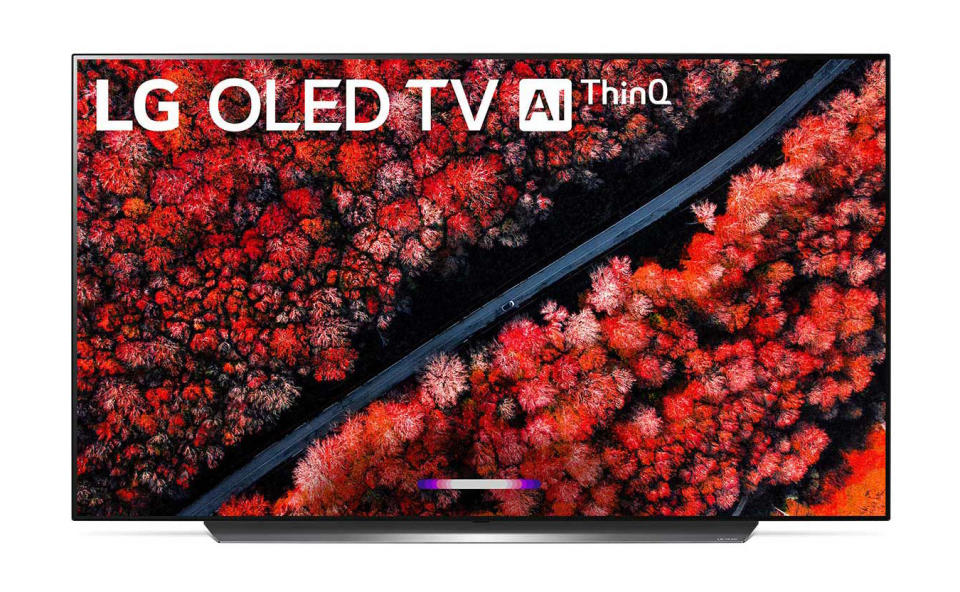
Who better to trust for OLED than the company that has perfected making it? Prices for LG's screens haven't come down as fast as we'd like, but that doesn't make them any less desirable. In fact, some reviewers prefer this $2,500 set to the more expensive Sony model, so you can enjoy a more than $1,000 price difference without feeling the slightest hint of FOMO.
In 2019 LG built-in support for AI assistants that goes beyond what others can do, with the ability to ask Alexa questions whether you own a standalone Echo or not. Over the years LG's 'Magic Remote' pointer has gotten better at navigating the webOS menus on these TVs, and flipping through the apps is always easy.
It's also AirPlay 2 and HomeKit-ready for Apple fans, so you won't need additional hardware to watch Apple TV+ programming. If you're a gamer, then you'll be pleased to know that these TVs have some of the lowest input lag around, with support for variable refresh rates on the Xbox One, and more recently, tear-free PC gaming with NVIDIA's G-Sync.
LG 65C9P OLED on Amazon - $2,497
Sony XBR65A9G
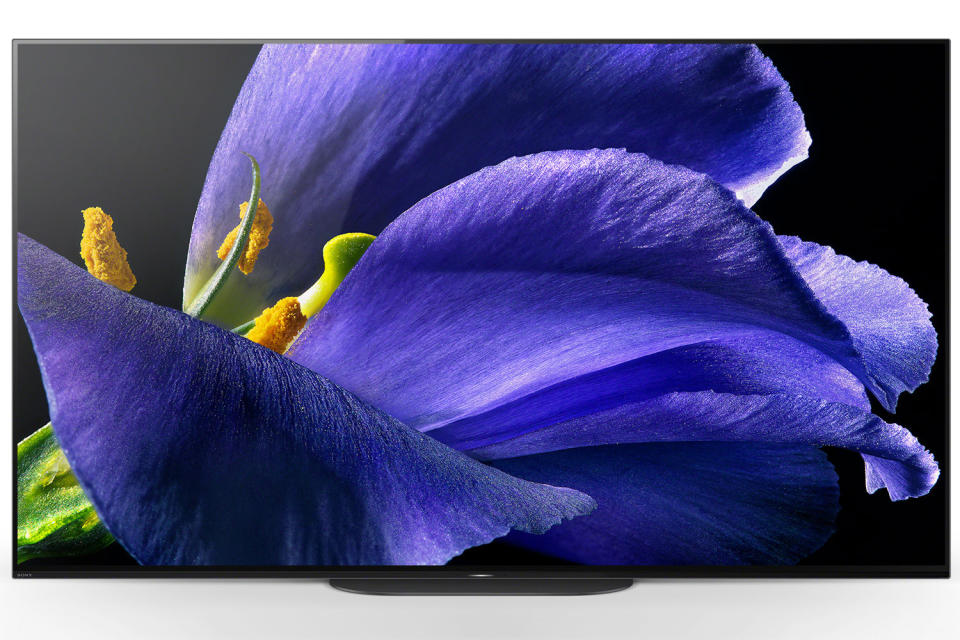
If your budget allows for it, then a combination of the best looking display technology and amazing image processing is probably the way to go. Sony's 'Master' level 4K television isn't cheap, but there's a reason it rates highly among experts -- it makes the most of every single OLED pixel.
Put this sleek, nearly bezel-less display in a dark room and it will deliver the cinematic experience you've been waiting for, without many other compromises.
While it's hard to imagine spending nearly $4k on a television for its built-in speakers, the Acoustic Surface Audio+ is a neat trick that actually sounds good. Even if you have a home theater setup, this allows the TV to deliver center channel sound without so much as a visible speaker grille.
This year Sony's remote is worth noting, with a couple of streaming-dedicated buttons and the ability to work without needing line of sight. Its Android TV OS means you are at Google's mercy for software updates, but there are tons of apps at the ready, and Google Assistant to make sure content is easy to find. Finally, it even includes Netflix Calibrated Mode to make sure you're watching Stranger Things exactly the way the Duffer Brothers intended.
Sony XBR-65A9G on Amazon - $3,978
ENGADGET'S GUIDE TO HOME ENTERTAINMENT
